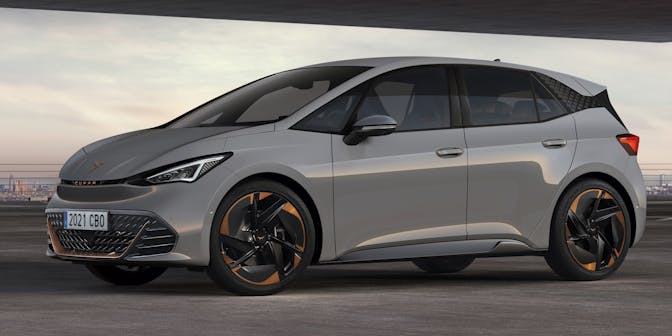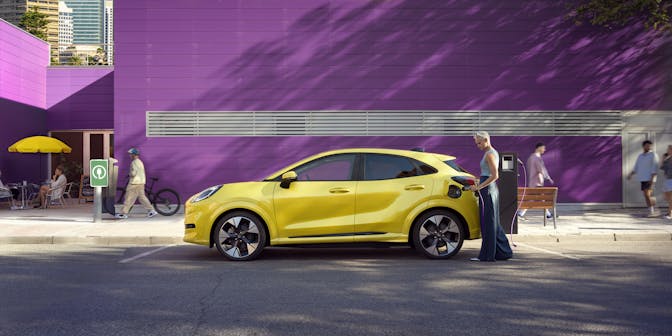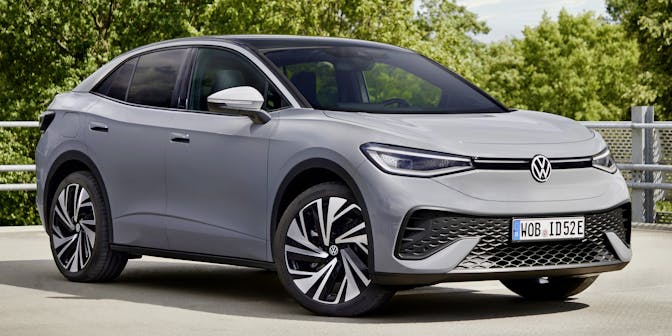The Top Ten Items of Confusing EV Terminology revealed
We look at the most common misconceptions that drivers have as a result of inconsistencies in how EV information is delivered.
• Research has shown that many motorists don’t understand terminology relating to electric vehicles
• There is also a lack of consistency in the way that such information is presented in the industry
• DriveElectric aims to address this issue with its EV leasing website
The top ten items of confusing electric vehicle (EV) information has been revealed!
Feedback has shown that many motorists don’t understand terminology relating to EVs, and in addition, there is a lack of consistency in the way that such information is presented in the industry.
DriveElectric has found that the top ten areas of EV information where more clarity and consistency is required are as follows:
EV acronyms
There are many EV acronyms that drivers of petrol and diesel cars don’t understand. Two examples are ‘kW’ and ‘kWh’. EV battery sizes are quoted in kWh (kilowatt hours). Charging speeds are quoted in kW (kilowatts). However the output of an EV’s electric motor is also expressed in kW – although sometimes this is quoted in PS, HP or BHP. Being aware of the power output of an EV is important. The output of an electric motor of a plug-in hybrid vehicle (PHEV) is usually relatively low, whereas the power output of the electric motor of a pure EV is usually much higher, which is the reason why BEVs (battery electric vehicles) have strong performance, but PHEVs typically have poor performance when driving on electric power. However most people won’t be aware of the power output of an electric motor in a plug-in hybrid because it generally isn’t publicised widely.
Battery size
The battery capacity of an EV is stated in kWh, which is a new concept to many motorists, and to make things even more confusing, sometimes battery sizes are quoted in terms of the ‘actual’ size of an EV’s battery, and sometimes battery sizes are quoted for the ‘usable’ size of an EV’s battery – both of which are different. Consumers can find it hard to know which battery size is being quoted for a particular EV, making like-for-like comparisons difficult.
Driving range
Motorists aren’t clear about the realistic driving range that can be expected from an EV. Although the older and less accurate New European Driving Cycle (NEDC) driving range figure has been replaced by the updated official Worldwide Harmonised Light Vehicle Test Procedure (WLTP) figure, this is still not a realistic expectation of what can expected in real-world driving due to variables such as driving style, weather, load, topography, etc. It’s often not clear for car buyers if the electric driving range figures displayed in response to online searches are for WLTP or estimated real-world driving ranges.
Charging speeds
What’s the difference between slow, fast, rapid and ultra-rapid charging? Most people don’t know, but more worryingly, there is much inconsistency within the industry over the use of these terms. Slow charging should refer to charging using a 3-pin plug, or up to 3 kW. Fast charging should refer to 7 kW (a home wall box) to 22 kW (typically found at a public charging site). Rapid charging refers to public charging that is between 50 kW to 150 kW, and ultra-rapid charging refers to charging at rates above 150 kW. The problem is that the terminology is applied differently by different people.
Three-phase charging
Many car manufacturers, particularly German OEMs, quote charging times for EVs based on using 11 kW, or three-phase, electric power, because this is common for domestic properties in Germany. However very few homes in the UK have this level of power – it’s mainly commercial premises that are likely to have three-phase power in the UK. So quoting times for 11 kW charging can be misleading for EV buyers.
Maximum charge rate
Different EVs have different maximum charging rates, but research has shown that most car buyers have limited understanding about this. The maximum charging rate of an EV is important, because if you plug your EV into a 350 kW chargepoint but your EV can only charge at 100 kW, then your charging will be slow compared to an EV that can charge at 350 kW.
Drop-off in charging speed
Many EV drivers believe that if they charge at a 100 kW chargepoint, the car will charge at 100 kW for the duration of the charge. In reality, nothing could be further from the truth. If you’re lucky, a charge could start at 100 kW, but it could be less, and it will drop from this rate, typically reducing down in ‘steps’. This is because an EV is likely to charge at a fast rate when its battery is almost empty, but when the battery charge increases, the charging speed will drop significantly. It’s for this reason that EV manufacturers will typically quote rapid charge times from 10% to 80% rather than to 100% – although again there is much inconsistency in the industry about the exact figures that are quoted – some manufacturers quote the time taken for an EV to charge from 0% to 80%. This is also why it takes a long time to charge from 80% to 100% at a public rapid charger – so it’s best to stop charging at that point and let other EV drivers use the charger.
Public charging, connectors & cables
Motorists who have previously never used public charging are often confused and anxious about charging an EV. There are lots of technical terms used when referring to charging, connectors and cables – such as CHAdeMO, CCS, Type 1, Type 2, etc. The good news is that the vast majority of new EVs use just one type of charging connector for public rapid charging – CCS (combined charging system) – and charging at most rapid chargers is as simple as connecting the charger’s cable with the CCS connector to the car’s socket and making a contactless payment.
Efficiency
A ‘miles per gallon’ figure has been quoted for petrol and diesel cars for many years, so buyers can compare how efficient one car is against another. A ‘miles per gallon’ figure isn’t applicable to an EV, but, with rising energy prices, it’s important to know how efficient an EV is compared to rivals. Efficiency figures do exist for EVs, but they’re often not easy to find, and the figures quoted are often inconsistent. For example, some EVs have a ‘miles/kWh’ figure quoted, whereas others have figures for ‘kWh/100km’, ‘Wh/mi’ or ‘Wh/km’. Miles/kWh is the most easily comparable with miles per gallon, so this should be used for consistency.
Electrified
Manufacturers are increasingly using the term ‘electrified’ for their cars, but what does this mean? Does it mean fully electric? Or plug-in hybrid? Or hybrid? Or mild-hybrid? Well, car manufacturers seem to use the term to cover all of the above technologies, which makes it very confusing – and misleading – for car buyers.
DriveElectric has used the above findings to inform the development of content on its website to provide clear information about EVs. For example, each vehicle is accompanied by a graphic that instantly provides four values for an EV’s range: official WLTP range, summer real-world range, winter real-world range, and the combined real-world range. In addition, information is clearly provided about an EV’s efficiency, useable battery size, and maximum rate of charging.
DriveElectric would like to see clear and consistent information for EVs throughout the industry.
Mike Potter, Managing Director of DriveElectric, says “Having provided expert advice about EVs to our customers since 2008, we wanted to share our knowledge more widely, to give consumers and businesses more clarity about the biggest areas of confusion about EVs. Subjects such as the differing charging rates of EVs are not common knowledge to many drivers, and our new website allows us to raise awareness about these issues with a wider audience.”
DriveElectric is an electric vehicle leasing company that has been helping organisations and individuals to adopt EVs to save money, lower emissions and transition to low carbon energy since 2008. DriveElectric aims to make the switch to electric cars and vans simple for business fleets.
Take a look at some of our electric car lease special offers...
Cupra Born 169kW e-Boost V1 59kWh 5dr Auto
- £2,098.85 Initial rental (ex. VAT)
- £2,518.62 Initial rental (inc. VAT)
- 48 Month term
- 5000 Annual mileage
- Subject to status and conditions + arrangement fee

Ford Puma Gen-E 123kW Select 43kWh 5dr Auto
- £2,324.57 Initial rental (ex. VAT)
- £2,789.49 Initial rental (inc. VAT)
- 48 Month term
- 5000 Annual mileage
- Subject to status and conditions + arrangement fee

Volkswagen ID.5 210kW Match Pro 77kWh 5dr Auto
- £2,722.90 Initial rental (ex. VAT)
- £3,267.48 Initial rental (inc. VAT)
- 48 Month term
- 5000 Annual mileage
- Subject to status and conditions + arrangement fee




